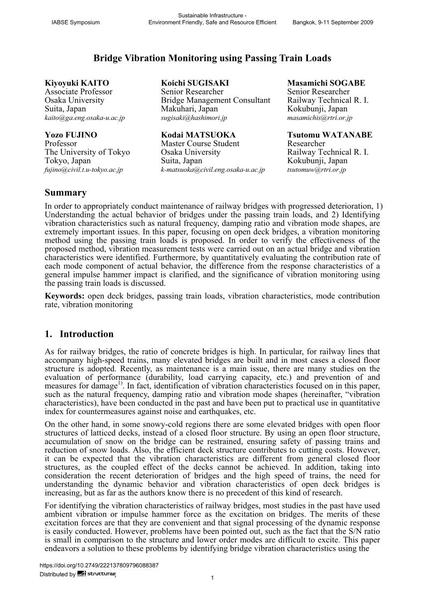Bridge Vibration Monitoring using Passing Train Loads

|
|
|||||||||||
Détails bibliographiques
| Auteur(s): |
Kiyoyuki Kaito
Koichi Sugisaki Masamichi Sogabe Yozo Fujino Kodai Matsuoka Tsutomu Watanabe |
||||
|---|---|---|---|---|---|
| Médium: | papier de conférence | ||||
| Langue(s): | anglais | ||||
| Conférence: | IABSE Symposium: Sustainable Infrastructure - Environment Friendly, Safe and Resource Efficient, Bangkok, Thailand, 9-11 September 2009 | ||||
| Publié dans: | IABSE Symposium Bangkok 2009 | ||||
|
|||||
| Page(s): | 173-180 | ||||
| Nombre total de pages (du PDF): | 8 | ||||
| Année: | 2009 | ||||
| DOI: | 10.2749/222137809796088387 | ||||
| Abstrait: |
In order to appropriately conduct maintenance of railway bridges with progressed deterioration, 1) Understanding the actual behavior of bridges under the passing train loads, and 2) Identifying vibration characteristics such as natural frequency, damping ratio and vibration mode shapes, are extremely important issues. In this paper, focusing on open deck bridges, a vibration monitoring method using the passing train loads is proposed. In order to verify the effectiveness of the proposed method, vibration measurement tests were carried out on an actual bridge and vibration characteristics were identified. Furthermore, by quantitatively evaluating the contribution rate of each mode component of actual behavior, the difference from the response characteristics of a general impulse hammer impact is clarified, and the significance of vibration monitoring using the passing train loads is discussed. |
||||
| Mots-clé: |
monitoring de vibrations
|
||||
